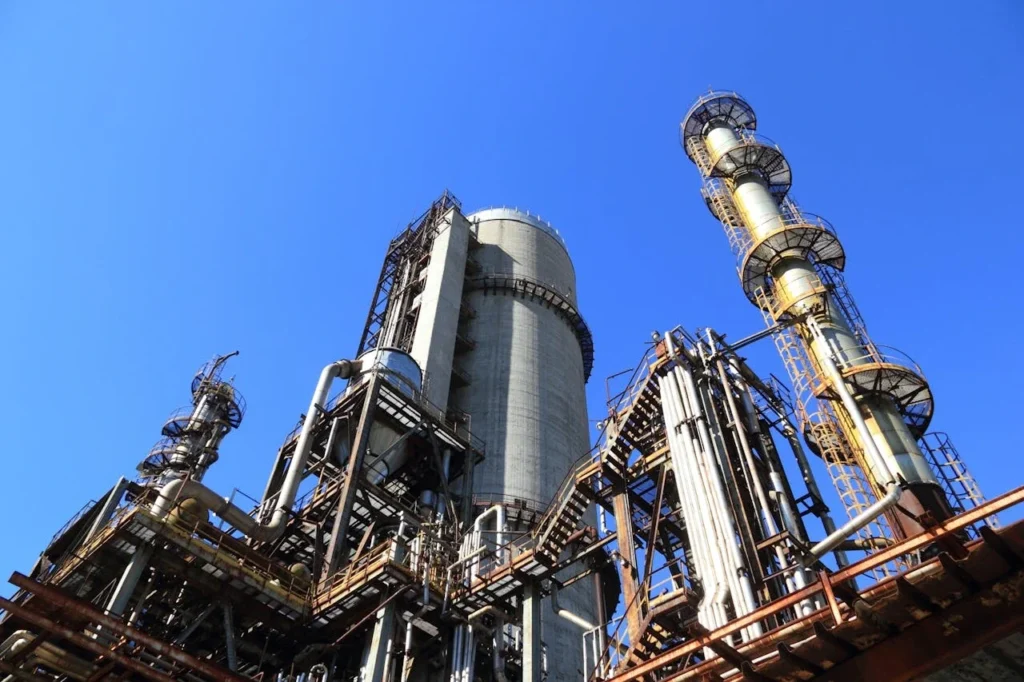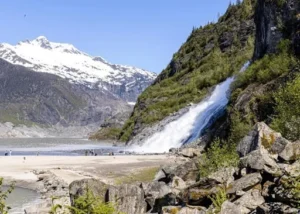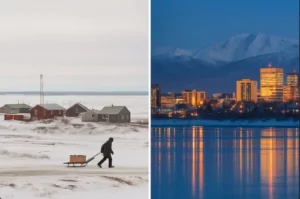Table of Contents
This case study explores the evolution of Alaska’s oil sector, the current state of its oil production, the challenges and opportunities it faces, and the outlook for the future, especially considering the global energy transition to cleaner, renewable energy sources.
📉 Brief History of Oil & Gas in Alaska

1968: Discovery of Oil at Prudhoe Bay
The discovery of vast oil reserves at Prudhoe Bay on the North Slope of Alaska in 1968 marked the beginning of Alaska’s emergence as a major player in the global oil market. It was one of the largest discoveries of oil in U.S. history, estimated to hold around 25 billion barrels of recoverable oil.
1977: Completion of Trans-Alaska Pipeline System (TAPS)
In 1977, the completion of the Trans-Alaska Pipeline System (TAPS) allowed oil from Prudhoe Bay to be transported more than 800 miles south to the port of Valdez for export. TAPS enabled Alaska to access national and global markets and revolutionized the state’s economy by allowing it to produce and export large quantities of crude oil.
1980s: Peak Oil Production
During the 1980s, Alaska saw its peak oil production, reaching over 2 million barrels per day (bpd). This peak marked Alaska as one of the leading oil producers in the United States. The state’s economy grew significantly during this time, benefiting from both oil revenues and job creation.
1990s-Present: Declining Production
In the decades since the 1980s, production from Alaska’s North Slope has steadily declined. As of 2024, production has fallen to 461,000 and 467,600 bpd, a fraction of the peak levels. Aging oil fields and the lack of new large discoveries have contributed to the decline. Despite this, Alaska’s oil industry continues to generate significant revenue, although its reliance on oil as a sole economic driver remains a concern.
⛽ Current Status of Alaska’s Oil & Gas Industry (2024–2025)
📊 Key Statistics
Alaska’s oil industry still plays a pivotal role in the state’s economy. The following table summarizes key statistics about Alaska’s oil production and economic impact.
Metric | 2024 Value | 2025 Projection |
Oil Production (bpd) | 421,000 bpd | 466,800 bpd |
Proved Oil Reserves | 3.4 billion barrels | Stable (No significant change) |
Oil Revenue for the State | $1.9 billion | Estimated similar |
Employment in the Oil Sector | 8,100 jobs | Projected 8,700 jobs (+7.4%) |
GDP Contribution | $8 billion | Expected stable growth |
Oil Production Decline
From its peak of 2 million bpd in the 1980s, Alaska’s oil production has seen a sharp decline. By 2024, oil production stood at just 421,000 bpd, reflecting the challenges the state faces with maturing oil fields, limited new exploration, and high extraction costs. The decline in production is due to the depletion of major fields, such as Prudhoe Bay, and the lack of large new discoveries.
Economic Contributions
Despite this decline in production, Alaska’s oil and gas sector still significantly contributes to the state’s economy:
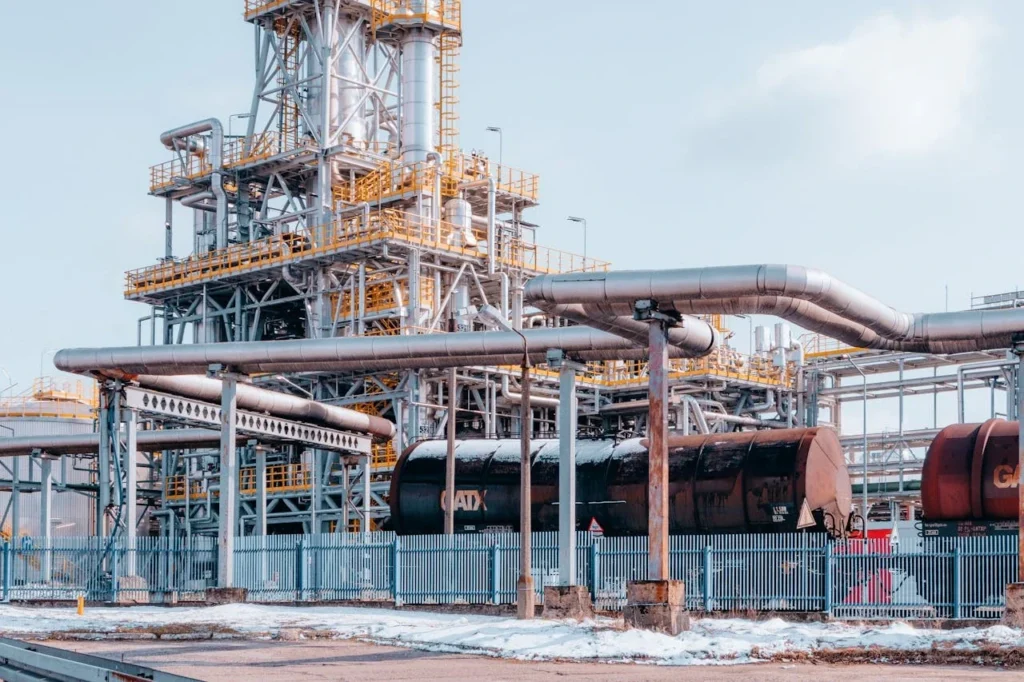
- State Revenue: Oil and gas revenues represent 40% of the state’s total revenue. In 2024, oil revenue contributed approximately $1.9 billion to the state budget.
- Permanent Fund: The Alaska Permanent Fund, which provides annual dividends to residents, is funded primarily by oil revenues. Each Alaskan resident received approximately $3,000 from the Permanent Fund in 2024.
🏢 Major Players in the Industry
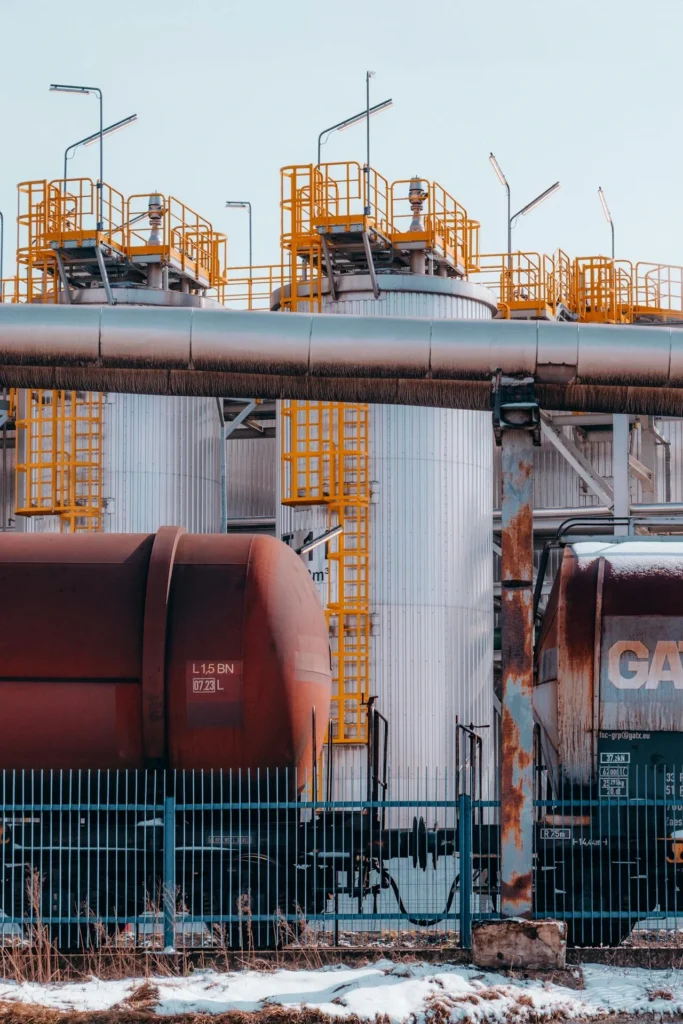
📊 Key Companies and Major Projects
- ConocoPhillips Alaska
- ExxonMobil
- Hilcorp Energy
- Willow Project (ConocoPhillips)
One of the largest players in Alaska’s oil market, ConocoPhillips operates multiple projects across the state. The company’s Nuna Project is expected to produce 80,000 bpd when it comes online in late 2024. Nuna, located in the Alpine Field, will be one of the most significant new additions to Alaska’s oil production in recent years.
ExxonMobil continues to operate in Prudhoe Bay, the largest oil field in North America, though production has steadily declined from its peak. ExxonMobil is investing in technology to extend the life of existing oil fields and reduce the environmental impact of operations.
Hilcorp Energy, one of the largest privately held oil and gas companies in the U.S., acquired BP’s assets in Alaska in 2019. Hilcorp has taken over several mature fields, with a focus on revitalizing them to extend production. This move has been controversial due to environmental concerns, as Hilcorp has been criticized for not investing enough in maintaining infrastructure and mitigating environmental risks.
The Willow Project is a controversial oil project located in the National Petroleum Reserve-Alaska (NPR-A). If approved, it will produce up to 180,000 bpd. The project has faced significant opposition from environmentalists and Indigenous communities due to concerns about wildlife impacts and climate change. However, it has received support from local politicians and is considered vital for Alaska’s future oil production.
🌎 Environmental and Regulatory Landscape
📊 Key Environmental Issues
Alaska’s oil and gas industry is under intense scrutiny from environmental groups and policymakers due to its impact on the Arctic ecosystem. Below are the key environmental challenges:
Melting Permafrost
- Impact on Infrastructure: Melting permafrost threatens the stability of infrastructure such as pipelines and drilling platforms. The Trans-Alaska Pipeline System (TAPS), which transports oil from the North Slope, is particularly vulnerable to changes in the ground temperature.
- Operational Costs: As permafrost melts, the cost of maintaining and repairing infrastructure increases.
Regulatory Pressures
- Federal vs. State Control: The debate over drilling rights in federal versus state-controlled lands has intensified. Alaska’s state government has pushed for increased drilling in the Arctic National Wildlife Refuge (ANWR) and National Petroleum Reserve-Alaska (NPR-A), while environmentalists and federal agencies have opposed such developments.
- Legal Challenges: The Willow Project, which is set to drill in the NPR-A, has faced significant legal challenges. Opponents argue that drilling in these areas could damage fragile ecosystems and endanger local wildlife.
📊 Major Legal and Environmental Concerns
Environmental Issue | Impact on Oil Production | Resolution Status |
Melting Permafrosto | Threatens pipeline integrity and operation | Ongoing monitoring and repairs |
ANWR Drilling Ban | Limits new exploration opportunities | Legal battles continue |
Willow Project Opposition | Environmental risks to wildlife | Under legal review |
🌍 Market Challenges and Geopolitical Pressures

📊 Declining Global Oil Demand
Alaska’s oil industry is under pressure due to the global decline in oil demand. The rise of renewable energy and the shift towards electric vehicles (EVs) have caused a reduction in global oil consumption. Alaska, which relies heavily on oil revenue, faces the challenge of maintaining production levels in the face of these shifts.
📊 Oil Price Volatility
- Russia-Ukraine War: The conflict between Russia and Ukraine has led to fluctuations in global oil prices, with prices reaching highs of $120 per barrel in 2022. Such volatility affects Alaska’s revenue forecasts, making it difficult to predict the state’s financial future.
- OPEC Influence: Decisions made by OPEC regarding oil production quotas directly impact the price of oil, which can significantly affect Alaska’s revenues.
📊 Investment Hesitancy
With the global shift towards ESG (Environmental, Social, Governance) investing, there is a growing hesitancy among investors to fund fossil fuel projects. Alaska’s oil industry has felt the impact of this, as companies are less inclined to invest in new exploration or expansion projects.
🛢️ Infrastructure and Logistics
📊 Aging Infrastructure
- TAPS: The Trans-Alaska Pipeline System (TAPS) is operating well below its maximum capacity of 2 million bpd. As of 2024, the pipeline transports only about 421,000 bpd. Aging infrastructure requires constant maintenance, and the pipeline’s future is uncertain as production declines.
- High Transport Costs: The remote location of Alaska’s oil fields makes transportation costly. The high cost of shipping oil via TAPS, combined with maintenance costs, has made it increasingly expensive for oil companies to operate in the region.
📊 Risk of Spills and Leaks
- Spill Risk: Despite technological advances, the risk of oil spills remains high, especially in remote and ecologically sensitive areas like the Arctic. A spill could have catastrophic consequences for local wildlife and ecosystems.
- Maintenance Challenges: Harsh weather conditions and the lack of infrastructure in remote areas increase the complexity and cost of maintenance and repair.
🌱 Future Outlook & Sustainability Shift
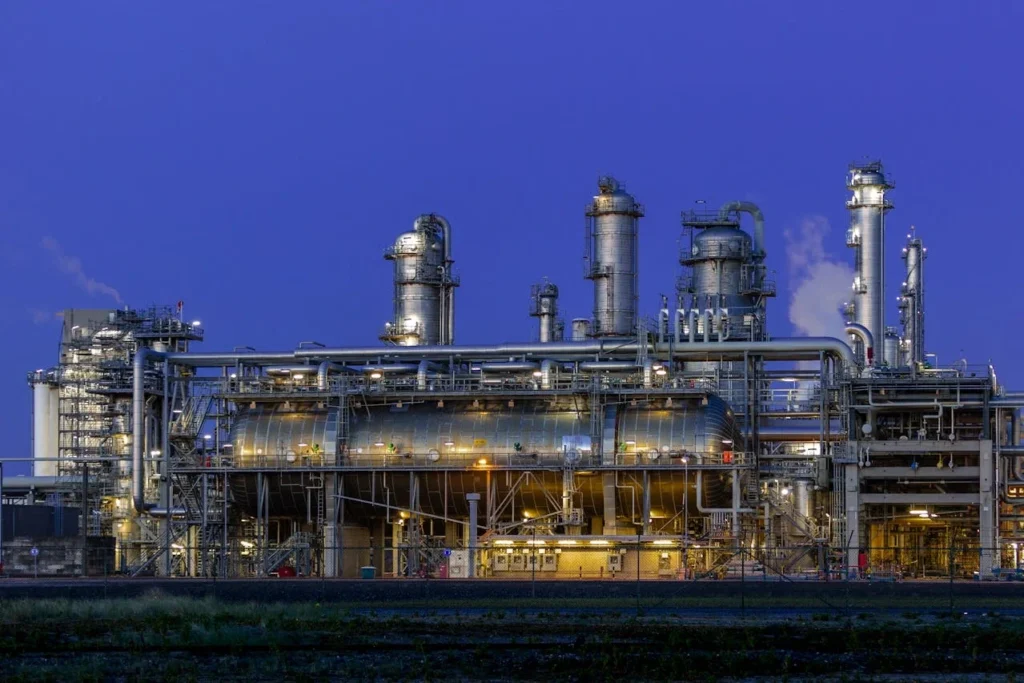
📊 Projected Production Increase
Despite the challenges faced by Alaska’s oil industry, some new projects show promise:
- Nuna Project: Expected to produce 80,000 bpd starting in late 2024.
- Pikka Project: Expected to add an additional 80,000 bpd by 2026.
📊 Transition to Renewable Energy
In response to global energy shifts, many oil companies in Alaska are now investing in renewable energy sources such as wind, solar, and hydrogen. These efforts are part of a broader strategy to diversify their energy portfolio and reduce carbon emissions.
📊 Carbon Capture and Hydrogen Technologies
Alaska’s vast natural gas reserves make it an ideal location for carbon capture technologies. In addition, there is growing interest in hydrogen production as a way to reduce emissions while continuing to use fossil fuels.
💡 Key Takeaways and Lessons Learned
- Diversify to Survive: Over-reliance on oil has made Alaska vulnerable to shifts in the global energy market. The state must diversify its economy to ensure long-term economic stability.
- Focus on Sustainability: As environmental concerns intensify, Alaska’s oil industry must prioritize sustainability, focusing on reducing emissions and protecting local ecosystems.
- Adaptation and Innovation: Focus on renewable energy and investing in carbon capture technologies will be critical for Alaska to remain competitive in the global energy market.
📅 Conclusion
Alaska’s oil and gas industry is at a critical juncture. The state’s reliance on oil has driven its economy for decades, but the future will require innovation, sustainability, and diversification. The challenge is clear: Alaska must balance the economic benefits of oil with the pressing need to transition to cleaner, renewable energy. With the right investments and policies, Alaska can maintain its position as a key energy player while contributing to global efforts to combat climate change.






